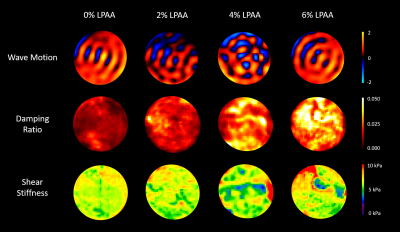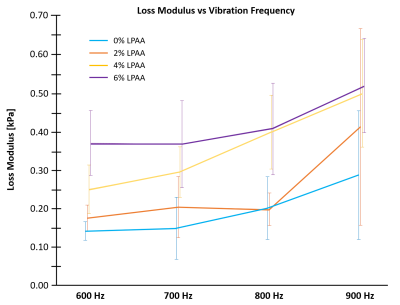L. Tyler Williams1, Zheng Cao1, Matthew D. J. McGarry2, Elise A. Corbin1, and Curtis L. Johnson1
1Biomedical Engineering, University of Delaware, Newark, DE, United States, 2Thayer School of Engineering, Dartmouth College, Hanover, NH, United States
1Biomedical Engineering, University of Delaware, Newark, DE, United States, 2Thayer School of Engineering, Dartmouth College, Hanover, NH, United States
Validation study
on the use of LPAA/PAA gels as viscoelastic MRE phantoms with
independently tunable shear stiffness and damping ratio. Phantoms show strong
MR signal and wave motion. Damping ratio increases with increasing LPAA
concentration while shear stiffness remains constant.


